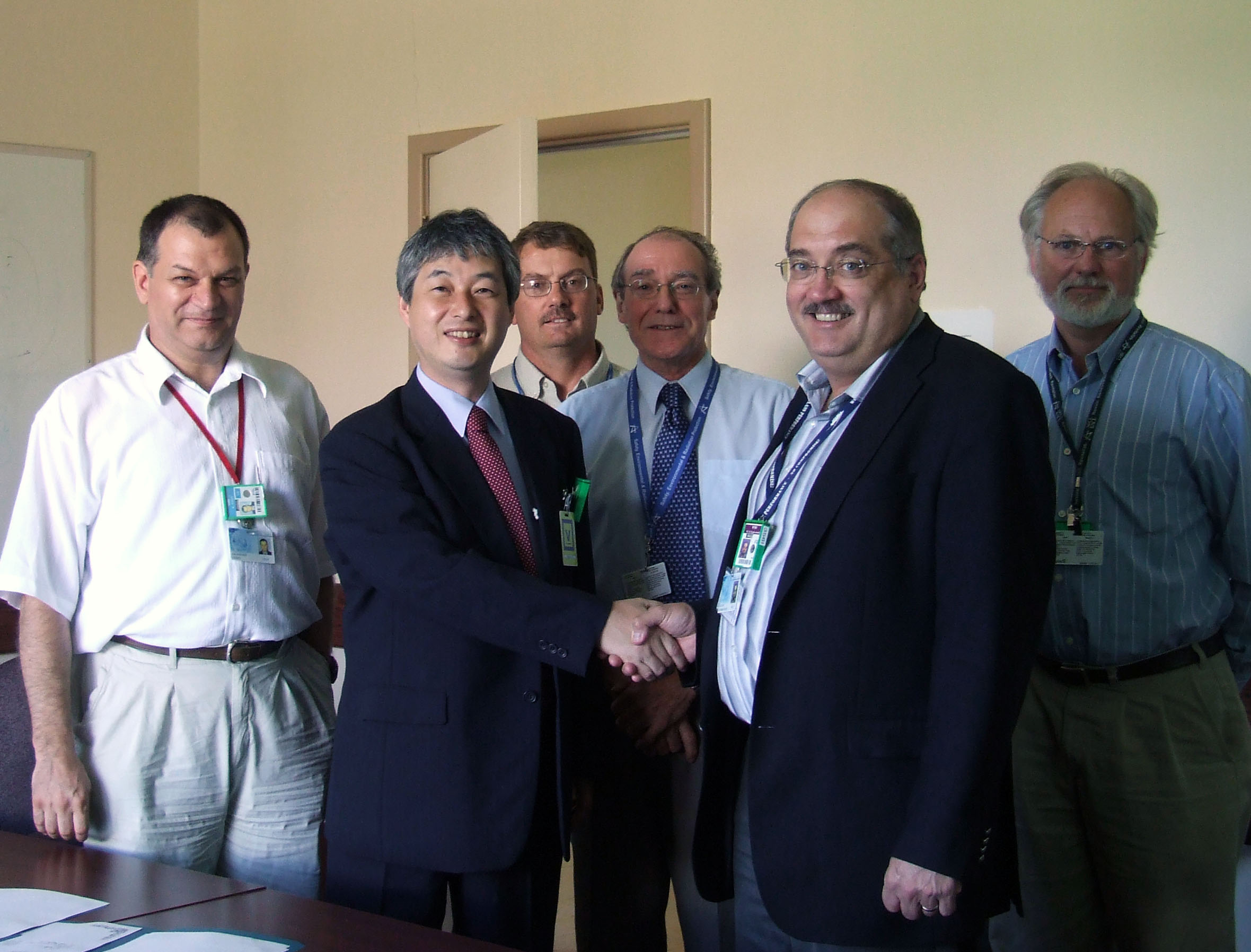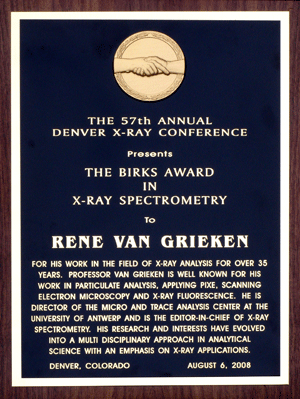X-ray microscopy is continuing to make significant progress in two directions, through the use of advanced X-ray optical elements and through the combined use of coherent X-rays and image analysis. Currently, the typical spatial resolution available at major synchrotron radiation facilities is the order of tens of nm. Professor C. Schroer (Technische Universität Dresden,
August 2008 Archives
Some of the most well known self-assembled monolayers (SAMs) are alkyl sulfides on gold surfaces. They have many potential applications in molecular electronics, biosensors, and nanopatterning. However, there have still been unsolved problems in basic research regarding Au-S interaction. Recently, Professor A. Morgante (Universita' di Trieste, Italy) and his colleagues published the results of grazing incidence X-ray diffraction and density functional theory-based molecular dynamics simulations for hexanethiol and methylthiol. The research group demonstrated surface complexes wherein two S atoms are joined by an intermediate Au adatom (RS-Au-SR) for longer chain cases. It was found that the sulfur atoms of the molecules bind at two distinct surface sites, and that the first surface layer contains vacancies as well as gold adatoms that are laterally bound to two sulfur atoms. Competition between SAM ordering and disordering of interfacial Au atoms takes an important role in the system. For more information, see the paper, "X-ray Diffraction and Computation Yield the Structure of Alkanethiols on Gold(111)", A. Cossaro et al., Science, 321, 943-946 (2008).
Our lab signed a Memorandum of Understanding (MOU) for research collaboration on the X-ray physics and industrial radiography with Chalk River Laboratories, Atomic Energy of Canada Limited (AECL), Ontario, Canada. The two institutions agreed to promote exchanges of researchers, information, publication of the results of the research and/or the implementation of cooperative research. AECL is responsible for the research and development of Canada deuterium uranium (CANDU) nuclear reactors. Both sides understand the significance of novel advanced X-ray technologies for non-destructive examination.

From right to left: Dr. Dag Horn (AECL, Section Head, NDE Technologies), Dr. William Kupferschmidt (AECL, Vice-President & General Manager, R&D), Dr. Robert Tapping (AECL, Director, Components and Systems Division), Dr. Nigel Fisher (AECL, Branch Manager, IMD), Dr. Kenji Sakurai (NIMS, Group Leader, Quantum Beam Center), Dr. Krassimir Stoev (AECL, Research Scientist, NDE Section).
At
The following awards were presented during the plenary session of the 57th Annual Denver X-Ray Conference:
The 2008 Birks Award was presented to Professor Rene Van Grieken (the chief editor of X-Ray Spectrometry journal), University of Antwerp, Antwerp, Belgium
The 2008 Jerome B. Cohen Student Award was presented to Mr. Sterling Cornaby, Cornell University, Ithaca, New York, for work entitled, "Bifocal miniature toroidal shaped X-ray mirrors
The 2008 McMurdie Award was presented to Dr. Jeffrey Dann, Osram Sylvania, Towanda, PA

Proferssor Rene Van Grieken was awarded the Birks Award.
The world's first dedicated X-ray synchrotron radiation storage ring, the Synchrotron Radiation Source (SRS), Daresbury, Warrington, in the UK has closed down after 27 years of operation. Since 1980, it has played a key role in enabling and performing cutting-edge research in physics, chemistry and materials science and opened up many new areas of research in fields such as medicine, geological and environmental studies, structural genomics and archaeology. It has hosted over 11,000 users, leading to the publication of more than 5,000 research papers. The baton now passes on to the new Diamond Light Source in Oxfordshire, the UK's direct successor to the SRS. For more information, visit the Web page, http://www.scitech.ac.uk/PMC/PRel/STFC/SRS.aspx Another interesting account by Professor Geaves is found in the following article, "Two million hours of science", G. N. Greaves et al., Nature Materials 7, 827 - 830 (2008).
A French research group has reported the application of X-ray fluorescence microscopy to the analysis of macrophages exposed to unpurified and purified single-walled (SW) and multiwalled (MW) carbon nanotubes (CNT). During this research, elemental mapping at cell level was performed for P, Cl, K, Ca and Fe. For more information, see the paper, "Carbon Nanotubes in Macrophages: Imaging and Chemical Analysis by X-ray Fluorescence Microscopy", C. Bussy et al., Nano Lett., 8, 2659-2663 (2008).





